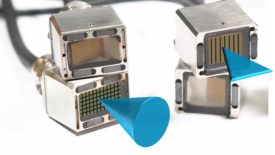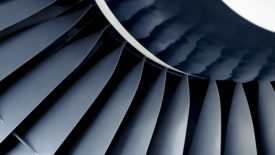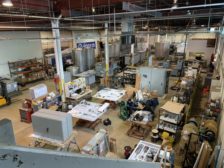Home » Keywords: » ultrasonics
Items Tagged with 'ultrasonics'
ARTICLES
NDT | Aerospace
Advanced ultrasonic testing solutions must keep pace with these new challenges while maintaining the rigorous quality control standards that ensure aircraft safety.
Read More
NDT | Back2Basics
Enhancing Automated NDT: Leveraging Advanced 3D Phased Array Scanning and C-Scan Mapping Techniques for Aerospace Applications
These technologies enhance the accuracy, speed, and thoroughness of flaw detection in critical components, contributing to improved safety and reliability in aerospace operations.
October 9, 2024
NDT | NDT Trends
Trends in Nondestructive Testing (NDT)
If the supply of qualified personnel is inadequate to meet the needs of industry there will be greater efforts to automate and utilize artificial intelligence to perform and evaluate NDT.
July 11, 2024
NDT | Robotics
NDT Robotic Path Planning: Automatic Methods for Ultrasonic Scanning Paths Generation
Optimal robotic paths are generated automatically to match part geometries.
June 11, 2024
NDT | Back2Basics
Advancements in Ultrasonic Testing: Unveiling the Tidal Force of Plane Wave Imaging on Nondestructive Testing Techniques
Plane wave imaging represents a groundbreaking approach within the realm of phased array ultrasonic testing.
May 16, 2024
NDT | Ultrasonics
Smart Inspection: Latest developments and novel approaches in industrial ultrasonic testing
Compact design and automation are important aspects in meeting the inspection requirements of today and the future.
March 1, 2024
NDT | Phased Array
Phased Array Ultrasound (PAUT) vs Phase Coherence Imaging (PCI) for Pipeline Inspection
One of PCI’s main strengths is detecting cracks that are vertical to the surface of the component.
October 3, 2023
NDT | Back 2 Basics
Gigacycle Fatigue Testing of Metals Using Ultrasonic Resonance
Fatigue testing is a well-known technique to help predict the long-term performance of materials.
August 15, 2023
Aerospace | Phased Array
Phased Array Ultrasonic Testing: A Tutorial
While PAUT is becoming a popular approach for nondestructive inspections, it is important that users understand this technology, its limitations and how it should be applied.
July 11, 2023
Quality Headline
Blackstone-NEY Ultrasonics Announces Second Manufacturing Facility
February 22, 2023
EVENTS
Webinar
5/15/24 to 5/15/25
Contact: Meg K.
Mastering Ultrasonic Testing Inspection of Small-Bore Welds: Unveiling the Power of 2D Matrix Arrays
Stay in the know with Quality’s comprehensive coverage of
the manufacturing and metrology industries.
eNewsletter | Website | eMagazine
JOIN TODAY!Copyright ©2025. All Rights Reserved BNP Media.
Design, CMS, Hosting & Web Development :: ePublishing









